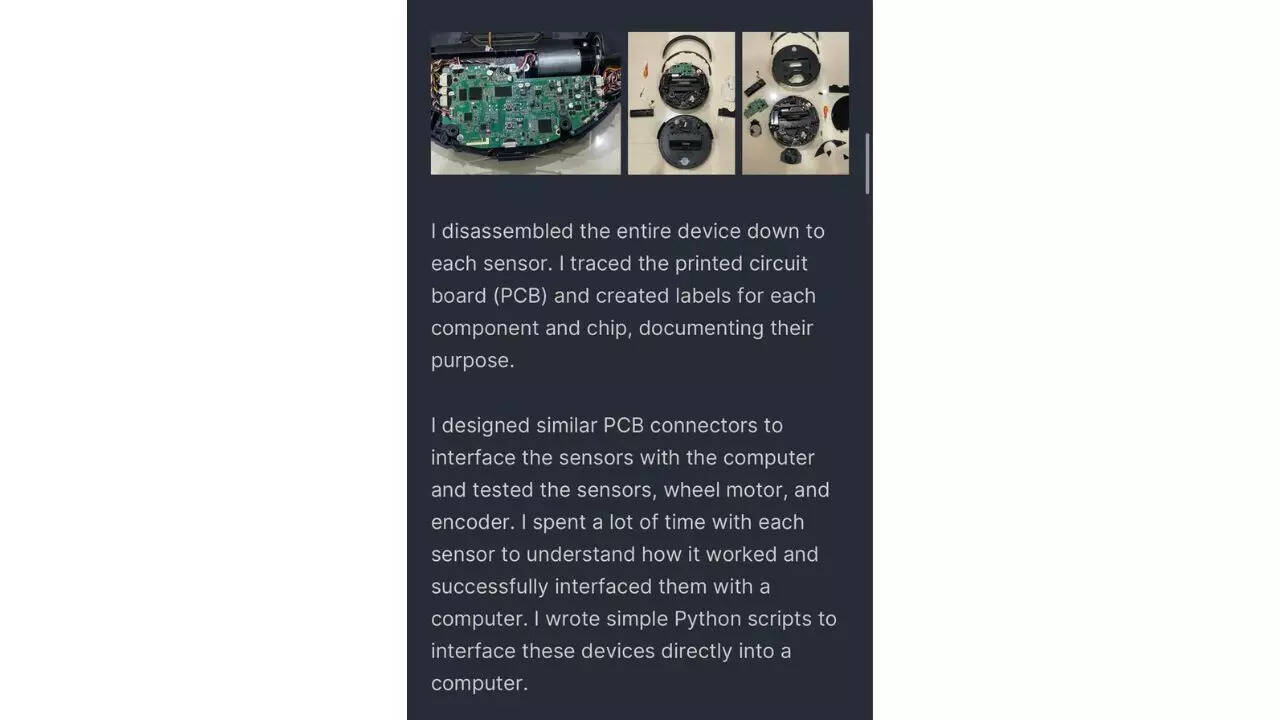Smart vacuum caught spying? Engineer’s chilling discovery will creep you out

Today, our homes are full of smart gadgets that make life easier– but sometimes, they come with hidden risks. Recently, a tech lover had an experience that showed how much these devices can learn about us. A normal-looking smart vacuum ended up raising privacy concerns when it was found to be collecting and sending data from inside its owner’s home.The start of a curious investigationHarishankar, an engineer who loves electronics, had been using his smart vacuum for almost a year. But because he likes to closely check how technology works, he decided to look into the vacuum’s network activity.“I’m a bit paranoid– the good kind of paranoid,” he wrote on his blog, Small World. Within minutes, he noticed a “steady stream” of data being sent to servers far away. “My robot vacuum was constantly communicating with its manufacturer, transmitting logs and telemetry that I had never consented to share,” he added.

When the vacuum stopped obeyingConcerned about the data being shared, Harishankar tried to block the vacuum from sending information. Almost immediately, the device stopped functioning entirely.“I sent it for repair. The service center assured me, ‘It works perfectly here, sir.’ They sent it back, and– miraculously– it worked again for a few days. Then, it died once more.”After repeating this process multiple times, the service center refused further repairs, stating that the warranty had expired. The vacuum had effectively become a “mere paperweight,” Narayanan wrote.Uncovering the hidden systemWanting to find out what was really going on, Harishankar took the vacuum apart and checked its internal system. He found that the Android Debug Bridge– a tool used to install and test apps– was completely open on the device.“In seconds, I had full root access. No hacks, no exploits. Just plug and play,” he said.

During his investigation, he found that the vacuum was using Google Cartographer– an open-source program that can make a 3D map of his home. This mapping information was being sent straight to the manufacturer.The remote kill commandHarishankar also found a line of code sent from the company at the exact moment the vacuum stopped working. “Someone– or something– had remotely issued a kill command,” he noted. After reversing the script, the device immediately resumed operation.“They hadn’t merely incorporated a remote control feature. They had used it to permanently disable my device,” he wrote. The discovery raised a serious concern: the company could shut down devices that resisted data collection.Disclaimer: This article is based entirely on information shared by Harishankar on his personal blog Small World and other online sources. The Times of India has not independently verified these claims or the authenticity of the events described.Thumb image: Canva AI (for representative purposes only)








